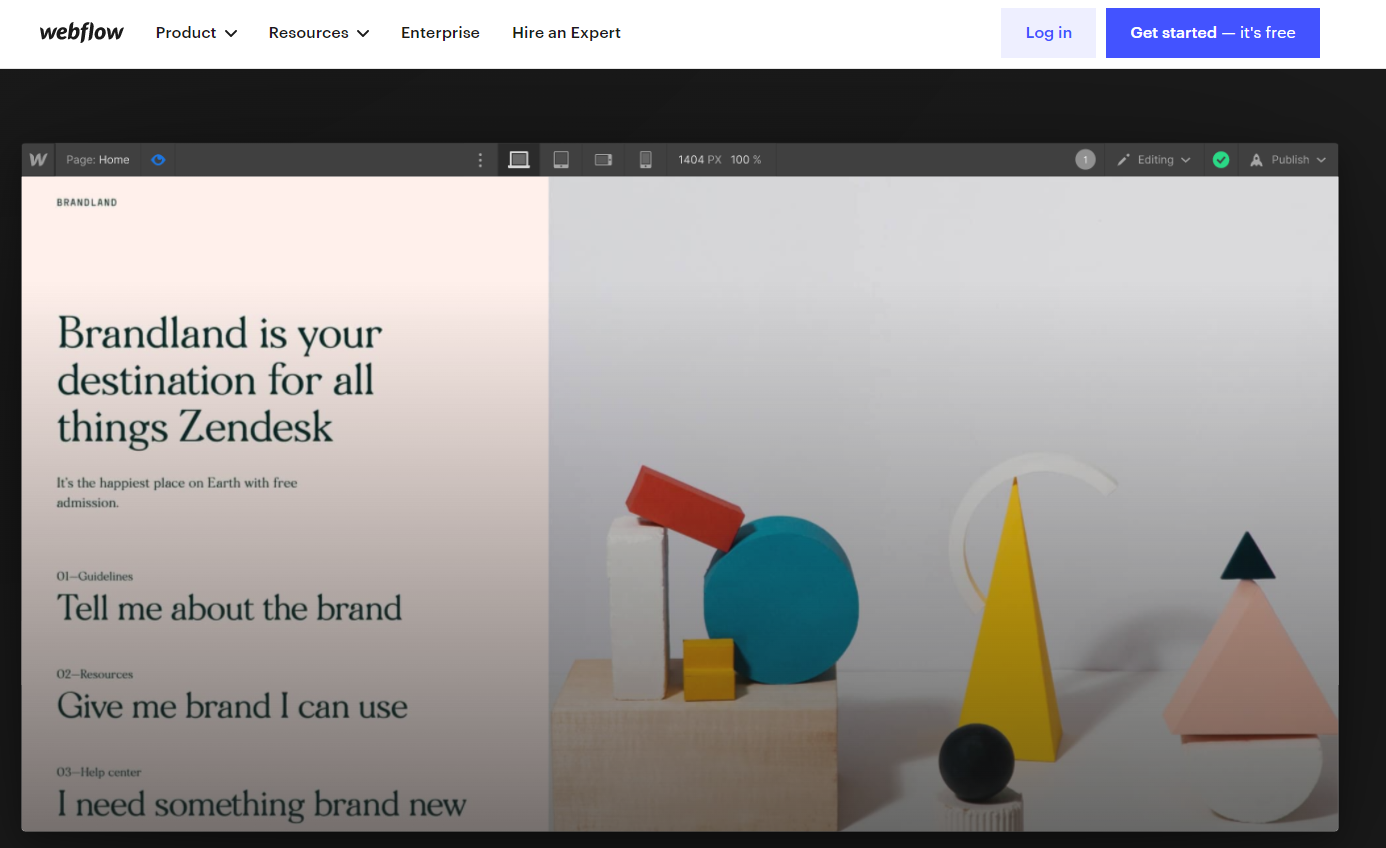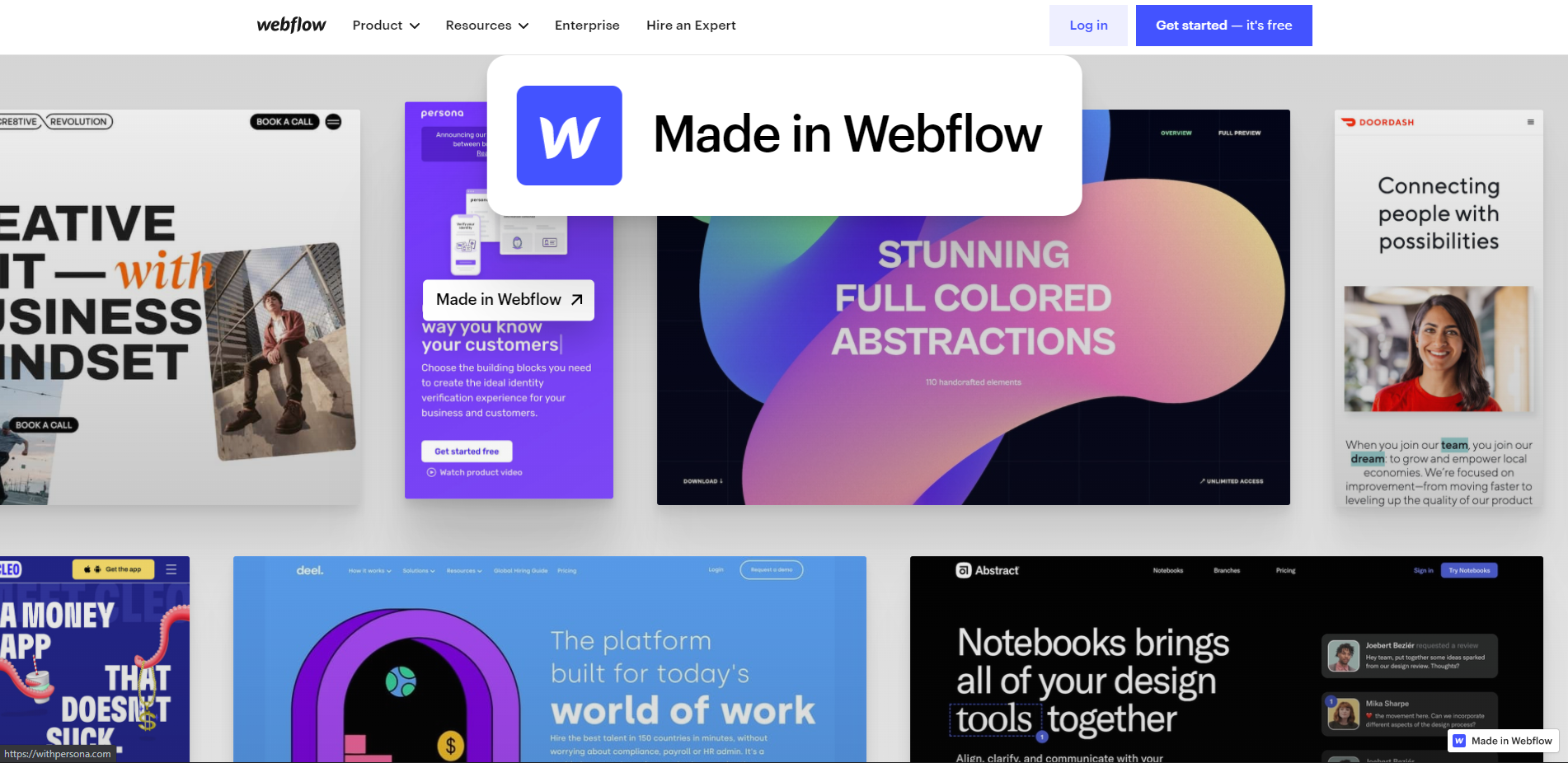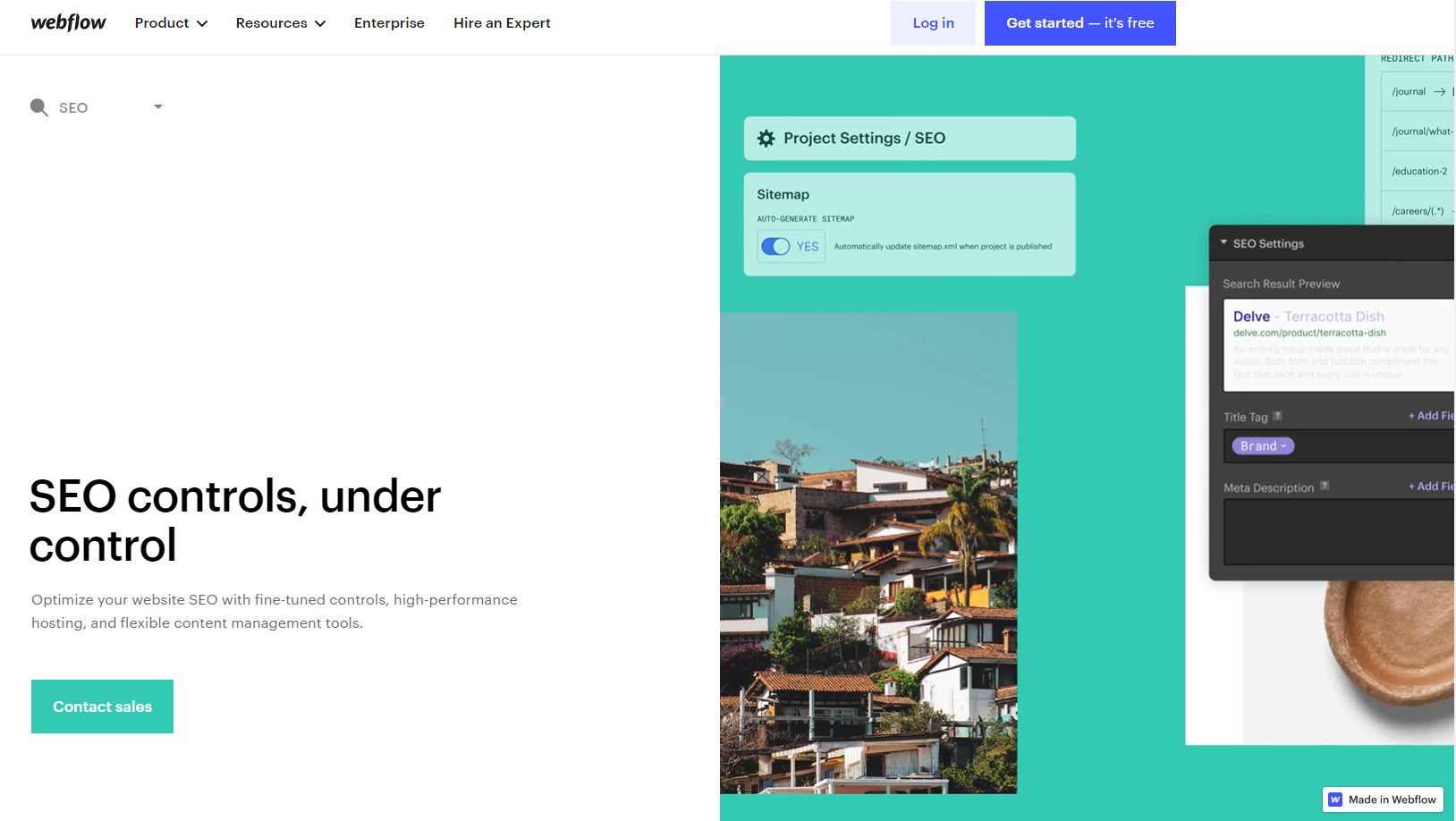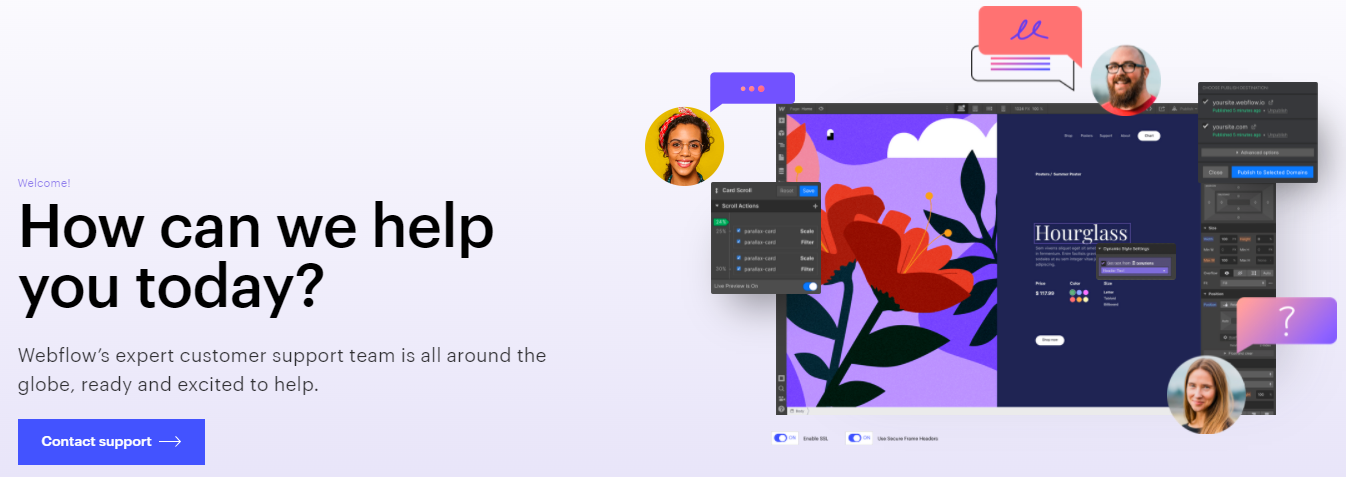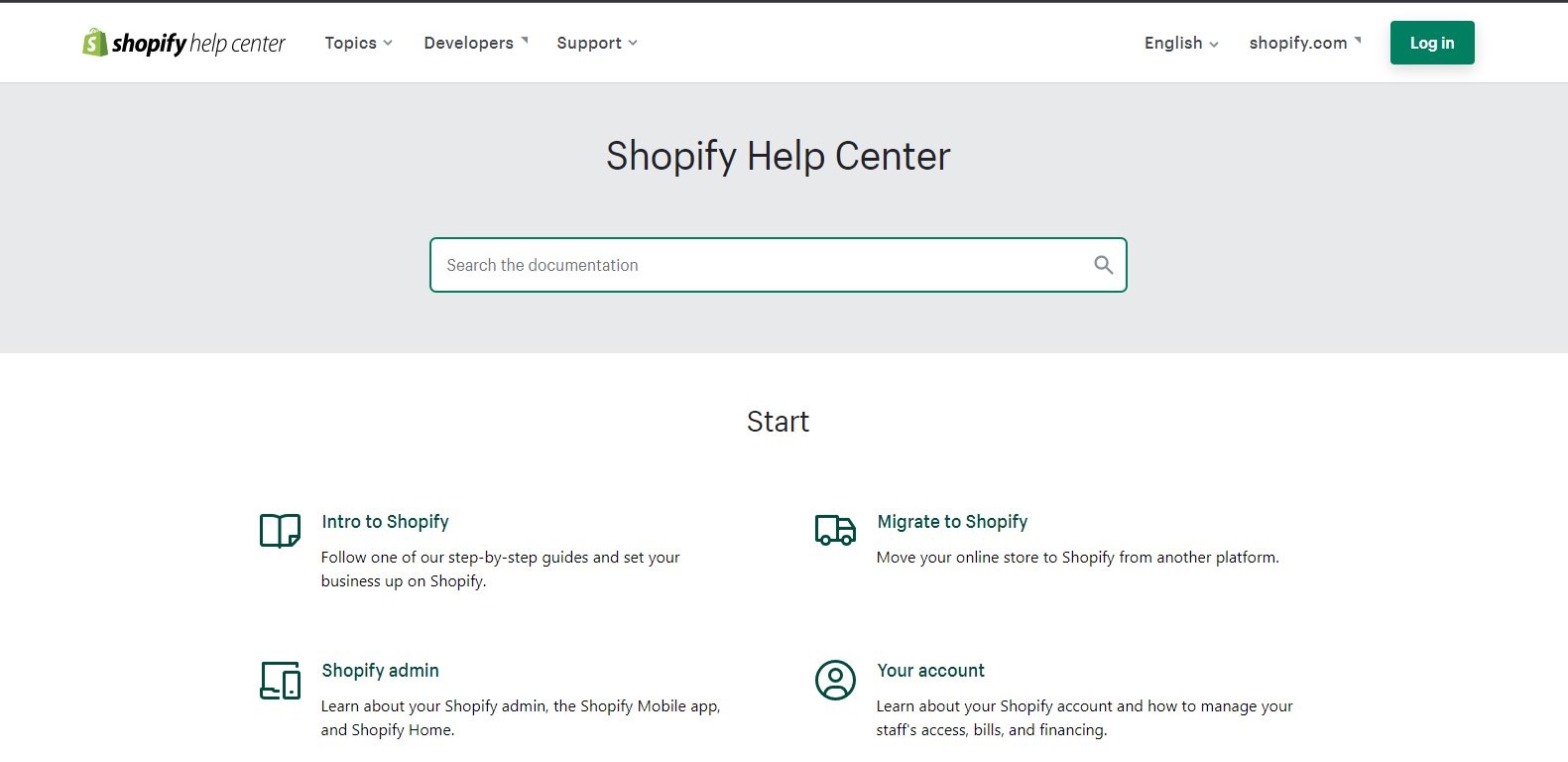Are you confused between Webflow vs Shopify ? Struggling to know that which one is better and why?
If yes then read the whole article to know each and every aspect of Webflow and Shopify.
Let’s start with the overview of differences.
Webflow Check out
Check out
|
Shopify Check out
Check out
|
|---|---|
| $24 per month | $29 per month |
Webflow is best to build a beautiful website with its Webflow designer without the need for any coding skills or knowledge. |
Shopify is great for people who want to start a business or a brand and have some marketing experience or are prepared to put in the work to study marketing. |
|
|
|
|
|
|
|
Webflow needs coding and preferred by high tech people which make it tricky for beginners. On the other hand, it is more flexible and offers a wider choice of design options. |
It is easy to use because it does not require any coding. Shopify is considered easier to use than Webflow. Beginners really like it and find more user friendly. |
|
Webflow does not outperform Shopify in terms of value for money because it's pricing includes fewer features in the same range. |
Shopify gives you more bang for your buck. Despite the fact that its mid-tier and advanced plans are more expensive, it nevertheless has a considerably more comprehensive feature set than Webflow. |
|
Webflow provides direct customer help through an email form that automatically enters you into the ticketing system. |
Shopify offers 24/7 customer assistance through email, live chat, and phone. |
| Check out | Check out |
This article is based on Webflow vs Shopify for a better understanding.
Webflow vs Shopify both are trustworthy and feature-laden website builders, which have already garnered notoriety with millions of customers throughout the world.
The systems are frequently updated by their creators to bring up the newest web design trends. Both of them are similarly strong, although each service has a specific specialty that makes it an ideal pick for certain user types.
Webflow – is a DIY website builder, the broad feature set and flexibility of which make it equivalent to modern Content Management Systems like WordPress.
Shopify — is a prominent eCommerce platform, which presently enables millions of websites throughout the world.
It works excellent for the construction of all sorts of online businesses, independent of their complexity, size and industry emphasis.
Both website builders have plenty to offer to their target audience since they are full-featured and reputable. Which of these, however, is a more desirable choice?
What system may be deemed the victor of the comparison or both of them are worth the investment? To address these and other system-related concerns, we have evaluated Webflow vs Shopify.
Webflow vs Shopify 2025: Overview
If you’re looking for information on Webflow vs Shopify, we’ve included all you need to know in this post to help you make an informed decision.
What is Shopify?
Shopify is one of the most well-known and long-established eCommerce platforms on the web. Tobias Lütke, Daniel Weinand, and Scott Lake launched it in 2004 after becoming unhappy with the present choices for starting an online snowboarding equipment company.
The platform places a premium on the simplicity of use and rapid setup. If you have an idea for an eCommerce company and want to have your online portal up and running as quickly as possible, Shopify can assist.
Shopify is also rather affordable. It is also priced similarly to Webflow at $29 per month. It does, however, charge a slightly higher transaction fee of 2.2 percent on each transaction.
However, that.2 percent might add up, so keep that in mind if you intend to handle a significant number of transactions. Additionally, Shopify is less configurable than Webflow. However, there is an incredibly diverse selection of free and paid templates accessible.
You may still create an appealing and functional eCommerce site. However, if you choose to alter any of the templates, you will almost certainly need to collaborate with a developer.
The templates are created in the Liquid templating language, which is not the easiest to learn if you are not a coder. The platform falls short of some of Webflow’s technical features, most notably technical SEO.
Because the program is built under SEO best practices, that aspect is taken care of for you. If you’re evaluating Webflow vs Shopify and expecting to climb the search engine result pages (SERPs), you may want to go with Webflow.
Shopify, on the other hand, offers more digital marketing options than Webflow. Recent years have seen the addition of a lot of sophisticated and helpful digital marketing tools, such as the ability to generate Facebook advertising directly from the site.
Additionally, you can manage your email marketing campaigns directly from a single dashboard. The purchasing platform is visually appealing and simple to navigate.
You may customize the shopping site somewhat, including adding your logo and changing the layout’s color palette. Additionally, it supports additional payment methods than Webflow, including Google Pay and Apple Pay.
Shopify also provides a somewhat improved experience for shop owners. For instance, there are more in-depth analyses. Additionally, you can print labels and calculate postage from the dashboard.
After examining each site in detail, let’s do some side-by-side comparisons to assist in resolving the Webflow vs Shopify eCommerce argument.
What is Webflow?
Webflow is a website design tool that includes a content management system and a server. It has one of the most elegant and fluid interfaces available, making it suitable for company owners who want to work with as little coding as possible.
The visual editor in Webflow is best-in-class. It’s elegant and intuitive, however, there may be some learning curve involved. Not to worry, Webflow University offers a variety of in-depth training to assist you in mastering the platform.
Additionally, there are a variety of free and paid templates available if you want to jump right in and get started. Additionally, Webflow includes some very strong technical tools.
The platform provides access to your site’s SEO, allowing you to edit technical SEO elements such as meta descriptions and page names. While the platform does not provide any built-in digital marketing capabilities, there are a plethora of third-party solutions that can assist.
One of Webflow’s most powerful features is the ability to completely modify the shopping cart and eCommerce platform. Additionally, their built-in shopping cart is quite strong, having been geared for conversions.
These kinds of robust solutions, which are supported by substantial market research and industry expertise, are simply not accessible if you operate your independent eCommerce website.
However, Webflow may be a little limiting for business owners. Yes, there is a single dashboard that provides you with all the essential information you need to operate a digital firm.
It is deficient in some key characteristics that are routinely utilized in day-to-day operations. Additionally, it accepts just Stripe payments. If you’re not utilizing Stripe, you’ll need to find another eCommerce service.
Webflow vs Shopify: Pricing Comparison
Price will be a consideration when deciding between Shopify and Webflow, so let’s begin there.
This is particularly critical when you’re initially starting, since it may take some time to build your audience and client base, and you don’t want to end up spending a lot out of pocket.
There are three price tiers available for Webflow. The entry-level package begins at $29 per month.
This includes a content management system (CMS), a fully customized shopping cart and shopping site, as well as product fields and emails. Each year, the basic plan may accommodate up to $50,000 in transactions.
Monthly fees for the Plus plan are $79 per month. This plan includes all of the Basic plan’s capabilities, as well as the option to send unbranded emails.
Additionally, it waives transaction costs and supports up to ten staff accounts. Webflow’s Plus package supports up to $200,000 in annual transaction volume.
Finally, the Advanced plan includes all of the features listed above. Additionally, it eliminates transaction fees and has no restriction on the number of transactions that may be processed every year. The advanced plan is priced at $212 per month.
Shopify’s pricing structure is more complex. Shopify offers a Lite edition, which is just a ‘Buy It Now button. Additionally, it integrates with Facebook.
Shopify Lite is just $9/month and is excellent if you already have a website and audience and are looking for a cost-effective option. Additionally, Shopify’s Basic plan is $29/month. Shopify’s entry-level plan is somewhat more remarkable than Webflow’s.
On your Shopify page, you can host an unlimited number of products. Additionally, there are a surprising number of robust tools available to the shop owner.
A shopping cart recovery feature is included, as is the option to generate mailing labels straight from the site. Additionally, Shopify enables you to launch special deals, provide discount coupons, and manually construct orders.
Additionally, there are no transaction costs if you utilize the Shopify payment interface. The Shopify plan is $79/month. It provides all of the characteristics of the lower-tier alternatives.
Additionally, it enables the creation of extra promotions and the provision of additional shipping savings. Additionally, you may make gift cards using the Shopify plan.
Finally, for more established firms, there are two Shopify alternatives. The Advanced Shopify plan includes all of the capabilities listed above, as well as a comprehensive set of site and company reporting tools.
Advanced Shopify is $299 per month. Additionally, you may use the Advanced Shopify interface to compute third-party shipping prices.
Shopify Plus plans begin at $2000 per month. It’s geared for bigger businesses, and you’ll need to speak with a customer contact to learn more about the options available.
Webflow vs Shopify: Which one is Better for SEO?
Webflow enables the automatic creation of search-engine-optimized webpages. To make the necessary SEO settings, go to the respective area on the section’s dashboard.
This is where you can complete the important SEO settings (descriptions, ALT tags for pictures, titles, and keywords) for both the whole website and its pages. Webflow produces a sitemap for your online shop automatically.
Additionally, it provides site designers with API access to assist them in completing their projects. Finally, the system enables you to link Google and Facebook services, integrate HTML/CSS codes, and provide the option of user IP anonymization.
Shopify is also an SEO-friendly site design platform. This implies that all online shops created using the technology are rather well optimized for search engines.
Your objective is to get to the SEO area and complete the primary criteria provided there. The software enables users to customize conventional SEO parameters. These contain meta tags for individual web pages and parts, titles, descriptions, and alternative text for pictures, among other things.
Additionally, you may watch your online store’s data to determine the primary factors affecting its success, such as traffic volume and source, consumer behavior, current search engine rankings, and traffic fluctuations.
As with Webflow, Shopify builds the sitemap for your online shop automatically, removing the need for you to perform the work manually. When it comes to SEO, both systems enable the creation of online shops that are well-optimized for further search engine advertising.
The solutions allow for manual adjustment of SEO parameters and can build sitemaps automatically, which simplifies the process for users. The main distinction is that Shopify, due to its specific specialty, provides more unique SEO options for eCommerce websites.
Webflow vs Shopify: Customer Support
When you do a support search on Webflow, you are sent to its University Tutorials, which serve as a great knowledge source. You may explore by subject and discover a wealth of information about the platform.
Apart from that, Webflow has a community forum for interaction with other users and a feature wishlist for expressing your preferences for future features.
Webflow provides direct customer help through an email form that automatically enters you into the ticketing system.
The tech support staff seems to be accessible Monday through Friday from 6 a.m. to 6 p.m. PST. This may sound restrictive to some, but you can at least anticipate an in-house support staff.
Shopify is well-known for its online help since it has an abundance of online papers and videos. For example, you’ll discover an eCommerce support center, a blog, manuals, forums, and podcasts.
Additionally, Shopify offers 24/7 customer assistance through email, live chat, and phone.
Given the ease with which you may contact Shopify at any moment and the abundance of help literature available online, I’d say it wins in the support category. However, Webflow is also rather good.
FAQs on Webflow vs Shopify:
Which is better Shopify or Webflow?
Shopify, on the other hand, offers more digital marketing options than Webflow. Additionally, it supports additional payment methods than Webflow, including Google Pay and Apple Pay. Shopify also provides a somewhat improved experience for shop owners. For instance, there are more in-depth analyses.
Does Webflow use Shopify?
Ecommerce system for organizing items, customizing a storefront, and accepting payments. With Dynamic Embeds, you may use an integrated Shopify widget to add goods from your Shopify account to your Webflow website.
Can you build an eCommerce site with Webflow?
Without writing a single line of code, Webflow Ecommerce enables you to create and design online shops, modify every part of your cart and checkout experiences, manage items and orders, and set up and launch a fully working, entirely bespoke online store.
Is Webflow any good?
However, it's fantastic that they give so much useful information. Webflow is an amazing application that combines robust content management system (CMS) capabilities with those of more traditional website builders — providing a plethora of options.
Quick Links :
Conclusion: Webflow vs Shopify 2025
The ideal web development platform should be chosen first and foremost based on the target you are pursuing and the outcome you intend to achieve in the long run.
This also applies to the selection of Webflow vs Shopify. The systems are effective and provide a great deal. The only critical contrast is between the systems’ primary emphasis and their specialized specialization.
Webflow is a feature-rich do-it-yourself website builder that enables the launch and management of all sorts of projects.
The website builder is not simple to understand since its features and tools are primarily targeted at web design professionals’ needs, talents, and requirements.
Shopify is a well-known eCommerce platform that is optimized for the building of online businesses.
The platform enables extensive project customization and includes responsive layouts, eCommerce capabilities, and tools, making it an excellent alternative for users of all types.
Which service is capable of taking the lead? This is conditional on the outcome desired. While Webflow is a one-stop shop for all sorts of projects, Shopify has always been and continues to be the undisputed champion in the eCommerce web design area.


